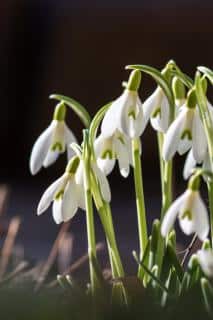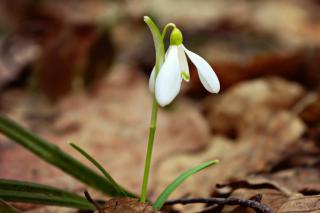

Snowdrop is one of the first to bloom at the end of winter.
Summary of Snowdrop facts
Name – Galanthus
Family – Alliaceae
Type – spring bulb
Height – 6 to 8 inches (15 to 20 cm)
Exposure – full sun
Soil: ordinary – Planting: fall, autumn – Flowering: winter, early spring
Planting is in fall and caring for it is truly very easy for your garden to sprout these cute little flowers.
Snowdrop and “spring snowflake” look almost exactly the same, and both have exactly the same needs when it comes to growing conditions. Each is often mistaken for the other.
 Fall is when to plant snowdrop bulbs, about 2 to 2½ inches (5 to 6 cm) deep.
Fall is when to plant snowdrop bulbs, about 2 to 2½ inches (5 to 6 cm) deep.Planting them under a hedge of deciduous shrubs is perfect because they’ll have the winter sun and the summer shade which suits them best.

At the end of the blooming season, wait for the leaves to turn yellow before cutting them off, this is the period when the bulb is stocking nutrients for the following year’s blooming.
In the end, snowdrop only requires very little care and is perfectly suited to beginner gardeners.
This plant bears its name well, since it is among the only ones that can bloom even though snow is still around.
There are 19 snowdrop species and over 500 different varieties. The most common one with the widest distribution is the Galanthus nivalis, and farther south another common one is Galanthus elwesii (shown in the main picture at top).
From January to March, you’ll love the small white bells that quietly announce that we’re headed towards spring.
Snowdrop generally announces spring and that means it will soon be the end of winter!
It’s also perfect for covering rocky spaces with flowers at the end of winter and the beginning of spring. It’s great way to get flowers in such spaces at this time of the year.
Snowdrop will bloom several years in a row if you don’t disturb them and if they don’t suffer too much heat in summer.
To avoid that, keep a thick layer of dried leaves over the bulbs in summer.